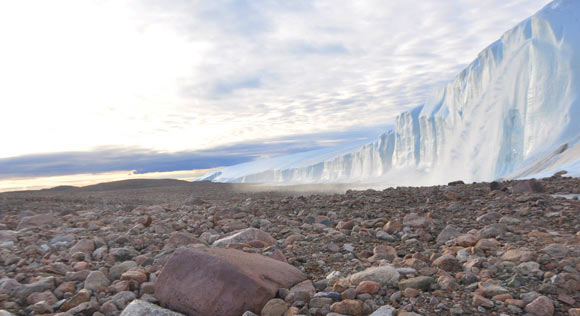The 31-km- (19.2-mile) wide Hiawatha impact structure is located beneath Hiawatha Glacier in northwestern Greenland.
The Hiawatha impact crater was formed by a 1-km- (0.6-mile) wide iron asteroid.
First discovered in 2015, the structure lies under an ice sheet that is approximately 1 km (0.6 miles) thick.
“Dating the crater has been a particularly tough nut to crack, so it’s very satisfying that two labs in Denmark and Sweden, using different dating methods arrived at the same conclusion,” said Dr. Michael Storey, a researcher at the Natural History Museum of Denmark.
“As such, I’m convinced that we’ve determined the crater’s actual age, which is much older than many people once thought.”
“Determining the new age of the crater surprised us all,” added Dr. Gavin Kenny, a researcher at the Swedish Museum of Natural History.
“In the future, it will help us investigate the impact’s possible effect on climate during an important epoch of Earth’s history.”
To date the Hiawatha structure, the study authors conducted 40Ar/39Ar analyses on glaciofluvial sand sampled immediately downstream of Hiawatha Glacier.
They also U-Pb conducted analyses on zircon separated from glaciofluvial pebbles of impact melt rock.
“Rivers flowing from the glacier supplied us with sand and rocks that were superheated by the impact 58 million years ago,” they said.
The Hiawatha impact event released several million times more energy than an atomic bomb.
At the time, the Arctic was covered with a temperate rainforest and wildlife abounded — and temperatures of 20 degrees Celsius (68 degrees Fahrenheit) were the norm.
About 8 million years earlier, an even larger asteroid struck present-day Mexico, causing the extinction of Earth’s dinosaurs.
“It is fantastic to now know its age,” said Professor Nicolaj Krog Larsen, a researcher with the GLOBE Institute at the University of Copenhagen.
“We’ve been working hard to find a way to date the crater since we discovered it seven years ago.”
“Since then, we have been on several field trips to the area to collect samples associated with the Hiawatha impact.”
The team’s findings were published in the journal Science Advances.
_____
Gavin G. Kenny et al. 2022. A Late Paleocene age for Greenland’s Hiawatha impact structure. Science Advances 8 (10); doi: 10.1126/sciadv.abm2434








